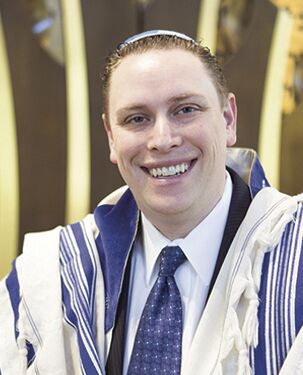Making memories is the sweet in Passover’s bitters
Published March 25, 2021
The “Sarajevo Haggadah,” handwritten and illustrated in 14th century Spain, was probably part of the expulsion from Spain in 1492. The details of how and when it arrived in Sarajevo, now the capital of Bosnia and Herzegovina, are not known. But it was sold to the Bosnian Museum in 1894.
It is unknown where it was during those four intervening centuries. In 2001, a team of experts undertook the restoration of this more than 600-year-old manuscript – with one proviso. Andrea Pataki of the Austrian Academy of Fine Arts would not do anything to remove the wine stains or other signs of the use of the haggadah at seder tables across the centuries.
“That’s something you never touch,” she said. “It’s part of the book’s history.”
Our haggadot may not quite have the centuries of history of the “Sarajevo Haggadah,” but the wine stains they bear are, for us, just as significant. Not only are they part of the book’s history, those wine stains are a part of our history. They incorporate collective and personal memory.
Memory is powerful. A colleague, Rabbi Josh Feigelson, recently wrote an essay about Jewish education. He suggests:
“I often find that we focus on the word ‘meaningful.’ We feel a need to make everything meaningful, which leads us to want to make meaning explicit, to teach and tell folks, ‘Here’s what this ritual means.’ But I have often felt that perhaps the word we should be equally, if not more, focused on is ‘memorable.’ We should be helping people engage in memorable Jewish experiences…”
In every survey, one fact stands out: No holiday is more widely observed than Passover. I am no sociologist, but I posit that the reason for Passover’s enduring relevance is its ability (whether it is your first or your 50th seder) to seamlessly fuse memory-making and meaning-making.
Passover is not the only Jewish experience that can be successful in doing this. From everything we do, we hope that you make memories, but we also hope that you find meaning as well.
The haggadah and its stains are not simply symbols of our memories. First and foremost, the haggadah is a collective story, a chance for us to place ourselves at the seminal event in Jewish history. Secondly, we can think about the many things those wine stains represent. They remind us of the time we laughed so hard at something Uncle Danny said that we knocked over our wine, or they remind us of the people long since gone with whom we have shared seder tables. Relationships, like rituals, can help us make both meaning and memories.
When my oldest, Benny, was 6, he was infatuated with the Cup of Elijah and the fact that Elijah might be “at” our seder and perhaps drink some of his wine. Benny didn’t see me inadvertently knock over Elijah’s cup and instantly place it upright. Moments later, Benny looked into the cup, and it was empty! He picked it up and energetically showed our guests that “Elijah had been there.” The amazed, bewildered and astonished look on his face is forever etched into my psyche.
Even if you do not have an Uncle Danny or strong Passover memories, there is no time better than the present to start to make new memories. This year, like last, we cannot gather in large groups for Passover seders. So, instead, I challenge you to create your own family seder, join us on Zoom, or find something or somewhere that is meaningful for this Passover.
I wish you a wonderful and sweet Pesach, filled with meaning, memories and not too much spilled wine!
Shabbat Shalom and Chag Kasher V’Sameach! Happy Passover!














